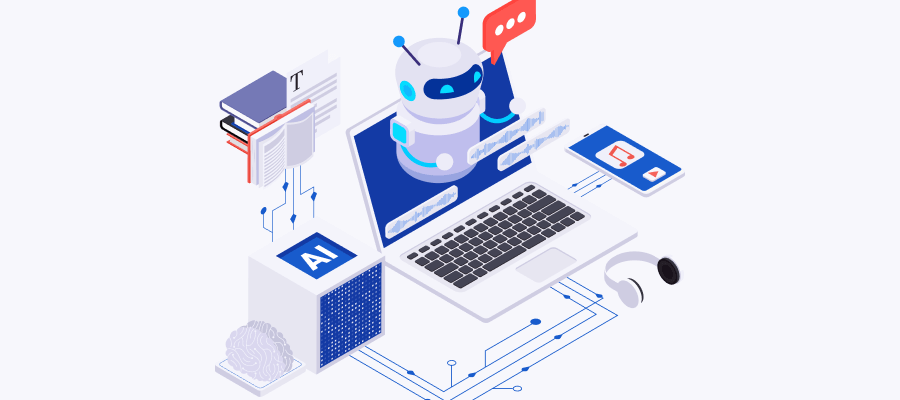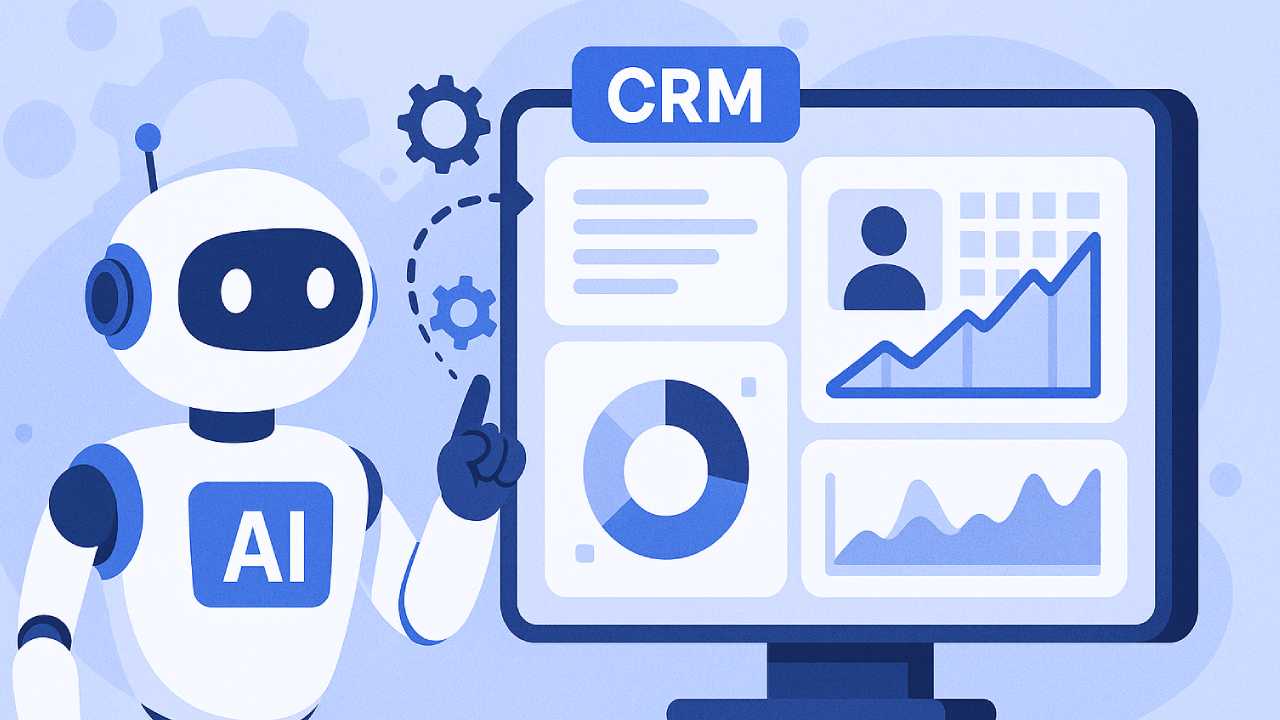Generative AI (GenAI) dominated discussions at events like AWS re:Invent 2023, with CEO Adam Selipsky highlighting its significance. To truly leverage GenAI’s power and achieve GenAI implementation success, organizations must carefully navigate potential challenges, particularly the “garbage-in, garbage-out” problem common in AI models. The economic potential is vast; a recent McKinsey study estimates GenAI could add $2.6 to $4.4 trillion in value. However, the study also notes that over 90% of future data will be unstructured – formats like videos, chats, code, and documents – which traditional data integration methods struggle to handle. This highlights both the immense opportunity and the critical need for specialized preparation, systems, processes, and tools tailored for GenAI adoption. Focusing on key capabilities is essential for a successful implementation journey.
Pinpoint Your Strategic Use Cases
GenAI offers a wide spectrum of applications. Instead of a broad, unfocused approach, identify and meticulously plan specific use cases that align directly with your business objectives. A clear understanding of potential applications allows for targeted efforts and resource allocation. McKinsey’s mapping of AI use cases in banking provides a compelling example, demonstrating the diverse possibilities categorized by feasibility and potential impact. Defining clear goals from the outset is fundamental to GenAI implementation success.
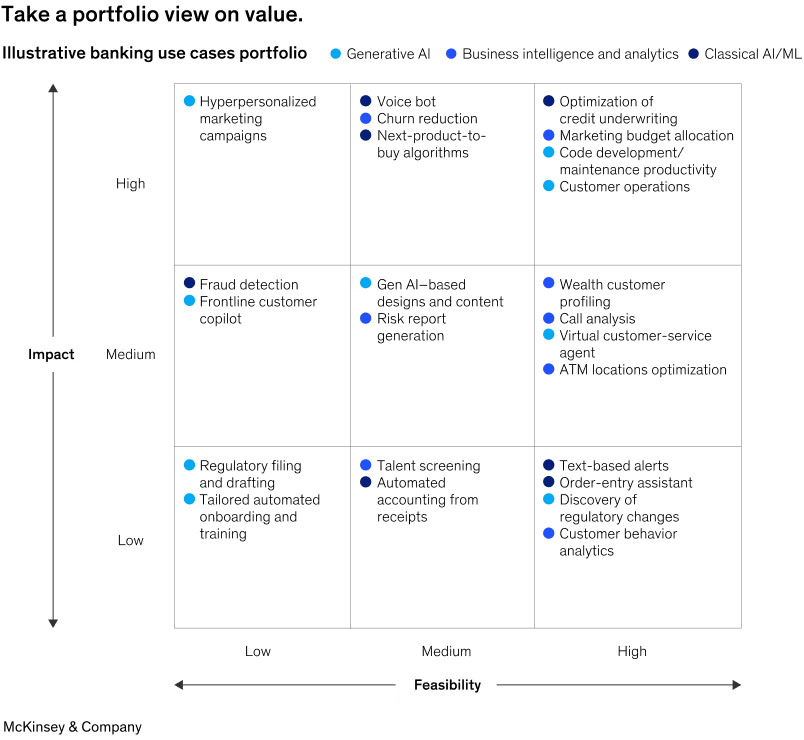 Diagram illustrating various GenAI use cases in banking mapped by feasibility and business impact
Diagram illustrating various GenAI use cases in banking mapped by feasibility and business impact
Select the Right Data Toolkit
Data is the lifeblood of any GenAI system. Lacking the appropriate tools can lead to significant time and cost inefficiencies, especially in a rapidly evolving landscape where use cases might shift quickly. When evaluating data tools, prioritize flexibility and ensure they include robust features for managing personally identifiable information (PII), crucial for any application involving private or sensitive data. Often, investing in flexible, purpose-built tools proves more cost-effective than attempting in-house development. Consider incorporating components that support a robust data architecture built for AI, as illustrated by McKinsey:
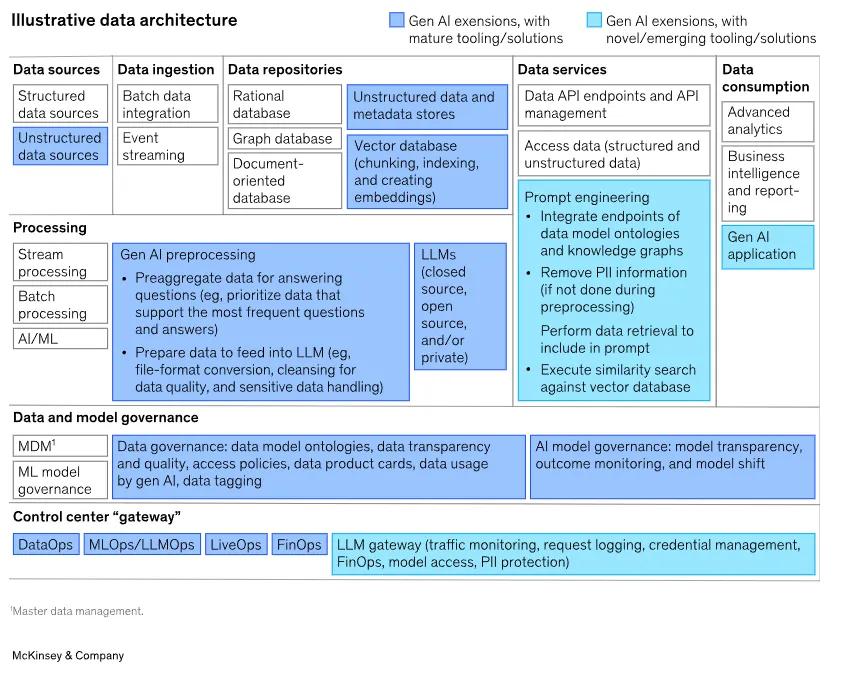 Sample data architecture diagram showcasing components enabling AI implementation success including data sources, processing, and LLMs
Sample data architecture diagram showcasing components enabling AI implementation success including data sources, processing, and LLMs
Ensure your data architecture includes these five essential components:
- Unstructured data stores: Identify all unstructured data sources and implement consistent metadata tagging practices to enable easy data discovery and utilization by teams.
- Data preprocessing: Data almost invariably requires preparation, including cleaning, format conversion, and PII hashing, before it can be effectively used by GenAI. Equip your stack with tools that simplify these tasks for all relevant personnel.
- Vector databases: Vectorization transforms text and other data into numerical representations. Vector databases are specifically designed to store and efficiently retrieve this type of data, which is essential for feeding new models or fine-tuning existing ones.
- LLM framework integrations: Your technology stack must seamlessly connect with various Large Language Model (LLM) frameworks, accommodating different prompt templates and data connection requirements.
- Prompt engineering: Develop capabilities to integrate business context and data understanding effectively into prompt engineering. This requires data tools capable of delivering the necessary context for specific use cases to elicit optimal responses from AI models.
Establish Robust Data Governance
Before initiating GenAI projects, develop a comprehensive data governance policy tailored to your data landscape and business requirements. Plan to implement tools that facilitate data lineage tracking and searchability. Prioritize transparency in data flows feeding AI models, enabling clear visibility into data usage, which aids in addressing issues like AI hallucinations and model drift by understanding the training data. A crucial aspect is establishing procedures for handling sensitive data and PII, including automatic detection and tools for masking or hashing sensitive information before model training or stakeholder access. Effective metadata tagging and tracking are integral to governance, ensuring data can be located and its journey traced across various flows.
Determine Optimal Data Storage Solutions
At an enterprise scale, data storage decisions are critical, potentially costing millions if mismatched or enabling significant discoverability and collaboration if chosen wisely. Data for GenAI models often doesn’t fit neatly into traditional relational database structures. Therefore, selecting storage solutions compatible with your specific data types, allowing efficient access and retrieval, is paramount. Consider the temporal aspect: Do your AI use cases require real-time updates? If so, select storage and data movement technologies capable of supporting real-time model refreshing. Consistent metadata tagging and cataloging across all data stores will significantly enhance data mapping and accessibility for teams.
Define Data Ingestion and Movement Patterns
Strategically plan and acquire tools and platforms to move data efficiently between storage systems, data producers, and AI models. The prevalence of unstructured data in AI contexts often complicates matters beyond the capabilities of traditional ETL/ELT platforms. Beyond data format challenges, data velocity is a key consideration, especially for use cases demanding near real-time data freshness. Carefully select a data flow platform capable of handling unstructured data, integrating with your storage solutions and target LLMs or models, and operating at the required speed for each use case.
Measure Progress and Demonstrate Value
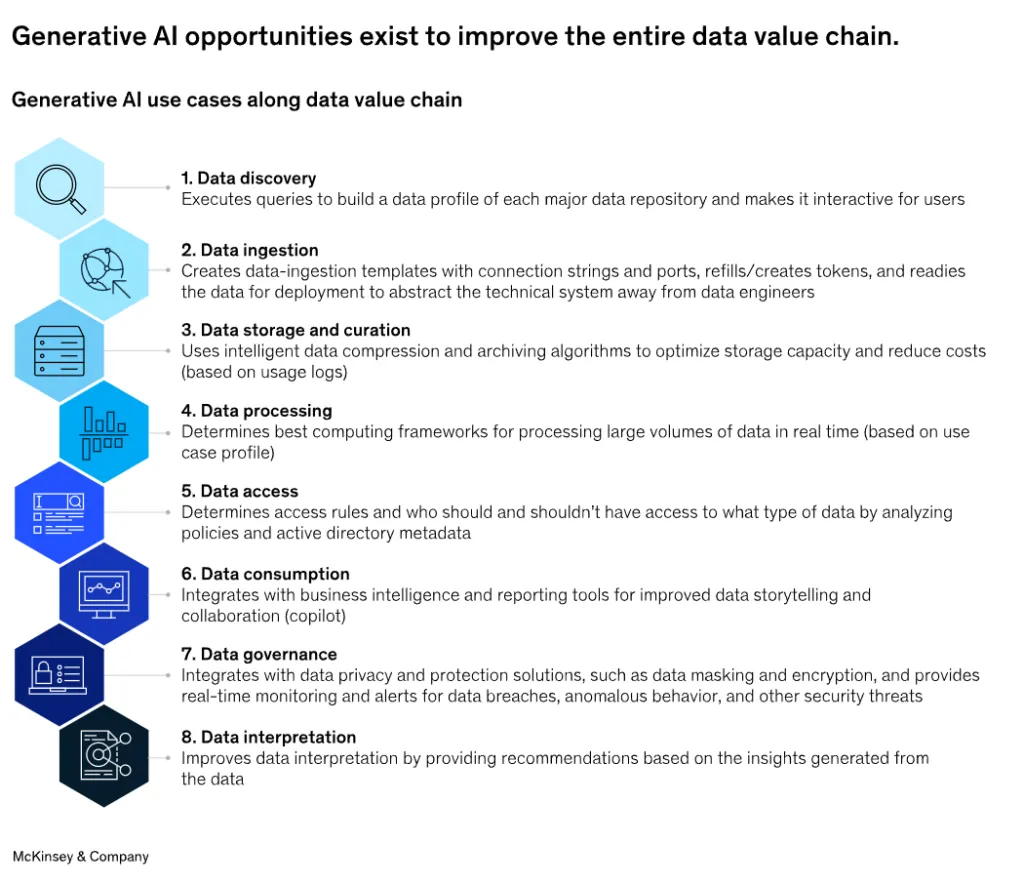 Framework diagram illustrating key metrics and methods for measuring the value and progress of GenAI initiatives
Framework diagram illustrating key metrics and methods for measuring the value and progress of GenAI initiatives
Throughout the implementation process, it is crucial to continuously monitor and quantify GenAI’s impact for stakeholders. This tracking serves not only to demonstrate value but also to generate insights for refining current initiatives and planning future AI experiments. Ongoing measurement helps pinpoint the most valuable applications of AI within your company’s data processes and validates the return on investment, reinforcing the case for GenAI implementation success.
Next Steps
GenAI holds the potential to fundamentally transform business operations. Achieving GenAI implementation success hinges on effective integration from the start, focusing diligently on the capabilities outlined above. This proactive, structured approach ensures that your AI initiatives deliver tangible value and function as intended, steering clear of the common pitfalls that can undermine GenAI projects and preventing the “garbage-in, garbage-out” outcome. By prioritizing strategic planning, robust data handling, and continuous measurement, organizations can confidently harness the power of Generative AI. Explore Sdigi AI Tools to discover solutions that can support your GenAI journey.
